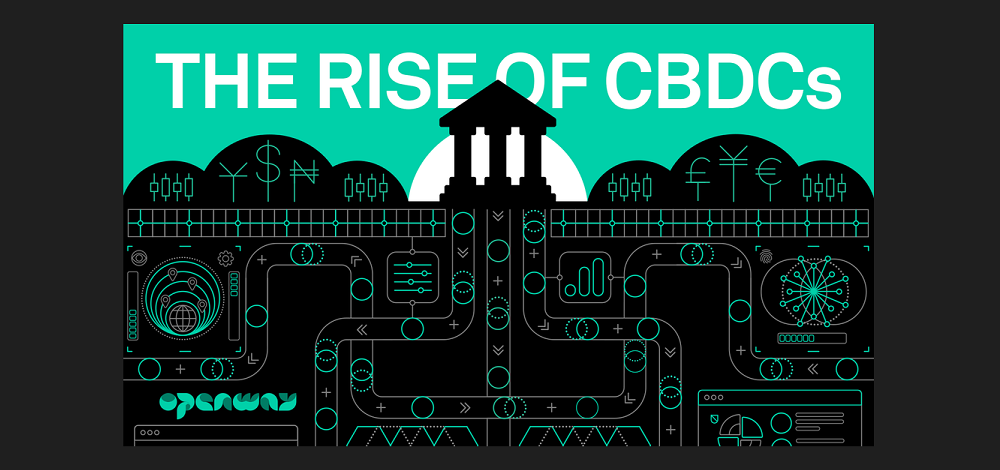
Mastercard’s participation in the Reserve Bank of Australia (RBA) and the Digital Finance Cooperative Research Centre’s (DFCRC) central bank digital currency (CBDC) pilot project explored potential use cases for a CBDC in Australia. Through the project, Mastercard has demonstrated technology that would enable CBDCs to interoperate with different blockchains and be leveraged by authorized parties in a safe and secure way
Mastercard today announced that it has successfully demonstrated capabilities of a new solution that enables CBDCs to be tokenised (or “wrapped”) onto different blockchains, providing consumers with a new option to participate in commerce across multiple blockchains with increased security and ease.
The solution, developed in partnership with Cuscal and Mintable as part of a RBA and DFCRC research project to explore potential use cases for a CBDC in Australia, includes controls ensuring that the pilot CBDC can be held, used, and redeemed only by authorised parties that have been Know Your Customer (KYC) verified and risk assessed by licensed service providers.
“As the digital economy continues to mature, Mastercard has seen demand from consumers to participate in commerce across multiple blockchains, including public blockchains. This technology not only has the potential to drive more consumer choice, but it also unlocks new opportunities for collaboration between the public and private networks to drive genuine impact in the digital currency space,” said Richard Wormald, Division President, Australasia at Mastercard.
Mastercard demonstrated in a live environment how the solution could enable the holder of a pilot CBDC to purchase a NFT listed on the Ethereum public blockchain. The process “locked” the required amount of a pilot CBDC on the RBA’s pilot CBDC platform and minted an equivalent amount of wrapped pilot CBDC tokens on Ethereum.
A pre-requisite of the test transaction was that the Ethereum wallets of both the buyer and seller, as well as the NFT marketplace smart contract, were ‘allow-listed’ within the platform. With all other transfers of the wrapped pilot CBDC blocked, it successfully demonstrated the platform’s ability to implement controls – even on public blockchains.
The pilot leveraged two pillars of Multi Token Network, which Mastercard introduced in June 2023 as a set of foundational capabilities designed to enable more efficient payment and commerce applications using blockchain technology. This includes Mastercard Crypto Credential which offers a set of common verification standards and infrastructure to enable trusted interactions using blockchain networks, in addition to interoperability to offer capabilities across all supported payment tokens and networks in a scalable manner.
Mastercard Multi-Token Network, which is currently in beta, plays a key role in Mastercard’s wider strategy to expand the use of blockchain technology across several payments use cases. It will allow regulated entities to take advantage of the functionality available in digital assets and is currently being piloted with select financial institutions around the world.
“As demonstrated in this project, the solutions that play a key role in Multi Token Network have the potential to enable new levels of interoperability between blockchains, in a safe and secure manner. By enabling people to easily move digital currencies on-demand, via Mastercard’s trusted network, more consumers could participate in crypto ecosystems using reputable and reliable forms of money, while enjoying the benefits that these currencies offer such as programmability, transparency, and compliance,” added Wormald.
Zach Burks, CEO and Founder of Mintable, a participant in Mastercard’s Start Path development program, said: “The vast potential of NFTs was obvious during this progressive CBDC pilot. Together with Mastercard, we have identified a use case whereby digital currencies and NFTs can easily be linked, potentially stamping out fraud and theft, ending the loss of documentation and records, and unleashing new possibilities for commerce. Mintology, Mintable’s B2B arm, is making NFTs more accessible and more valuable with innovative new uses. While digital currencies are in their infancy, NFTs are already being used for new media, gamification, digital identities, loyalty programs, ticketing, authentication, certification, and more.”
Nathan Churchward, Domain Lead, Payments at Cuscal, added: “We were pleased to collaborate with Mastercard to test new approaches to managing settlement and liquidity risk through the CBDC pilot. It’s exciting to be able to further partner with Mastercard to support the future of banking and payments in Australia.”
The RBA’s CBDC pilot project with the DFCRC explored potential use cases for a CBDC in Australia. The project involved the RBA issuing a limited scale ‘pilot’ CBDC that was a real legal claim on the RBA. The pilot CBDC was used by selected industry participants to demonstrate how a CBDC could be used to provide innovative payment and settlement services to Australian households and businesses.
Banking 4.0 – „how was the experience for you”
„To be honest I think that Sinaia, your conference, is much better then Davos.”
Many more interesting quotes in the video below: